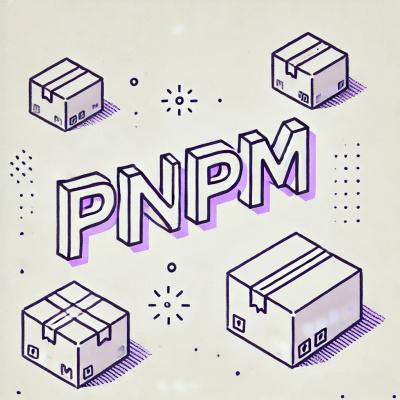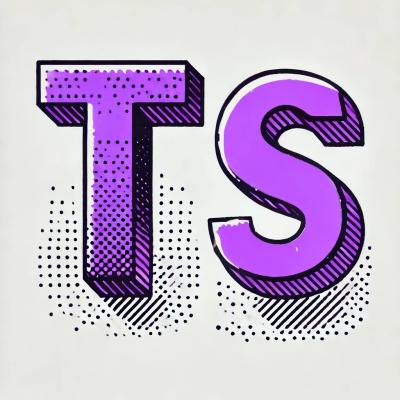
Security News
pnpm 10.12 Introduces Global Virtual Store and Expanded Version Catalogs
pnpm 10.12.1 introduces a global virtual store for faster installs and new options for managing dependencies with version catalogs.
dynamic-record
Advanced tools
A bare minimum Javascript implementation of the Active Record pattern
Dynamic Record is a database abstraction package for node.js that is inspired by Ruby on Rails' ActiveRecord for node.js. We aim to support most major database systems including MongoDB, MySQL, PostgreSQL and many more. For the moment there is only support for MongoDB
Note: Dynamic Record is currently in Beta and should not be considered production ready.
npm install dynamic-recordnpx dynamic-record init.npx dynamic-record init by providing flags and arguments that can be found using npx dynamic-record init --help.Although the API is more or less as how we wanted it to be, changes can still occur. Documentation of the API is available at https://dynamic-record.js.org/
A database initialized with the included dynamic-record tool is enough to get started with a user that has readWrite access.
Next we look at Dynamic Record in a bit more detail. Dynamic Record is split into three main parts:
Before diving into the individual parts, we need to explain a few concepts.
First is that for each table (or collection if you are using MongoDB) in your database, you will create an instance of DynamicRecord and it will be responsible for handling all read write operations to the database.
Next is the idea of models and collections. If you have used an MVC framework such as Backbone before, you will be familiar with this concept. We are borrowing quite directly from the concept in Backbone where models are wrapped data objects and collections are an array-like object that contains multiple entries of models. This corresponds to DynamicRecord.Model and DynamicCollection respectively. These instances handle write operations to the database.
Finally for each table in the database they will have their own schema defined with JSON Schema. They will be saved in a table named _schema and will mainly be used for validation and in the case of NoSQL database, schema definition. They are mainly accessed by DynamicSchema instances.
We will need to create a database connection that can be passed to create DynamicRecord instances. These database connection can be reused across multiple instances of DynamicRecord, DynamicSchema, or DynamicCollection objects. You can also create multiple database connection each connecting to a different database server and instantiate DynamicRecord objects with them.
const connection = require("dynamic-record").createConnection(database_url);
DynamicSchemaBefore creating any entries in the database with Dynamic Record, you will first need to define the tables that are going to be used.
In your app, you can create an instance of DynamicSchema as follow.
const createSchemaInstance = require("dynamic-record").createSchemaInstance;
const mySchema = createSchemaInstance(connection);
This will create an empty instance of DynamicSchema but it will do nothing else. To create a table in the database with a set schema, call createTable() on the instance and provide to it a parameter in the form of a JSON Schema object.
const monarchSchema = require("./monarch.schema.json");
monarchSchema.createTable(monarchSchema).then(() => {
// Schema created in database
});
DynamicRecordThis is the main entry point to the ORM. You can initialize an instance of DynamicRecord with the following snippet.
const createInstance = require("dynamic-record").createInstance;
const myTable = createInstance(connection, "myTableSlug");
With the created instance you can fetch a particular entry from the database by providing a query object to match with findBy().
myTable.findBy({name: "Henry V"}).then((entry) => {
console.log(entry.data);
});
DynamicRecord.ModelDynamicRecord.Model is a wrapper for the objects returned by any query function under DynamicRecord, it is also used to create new models to be inserted into the database. To create a new instance of DynamicRecord.Model use the following snippet.
const createInstance = require("dynamic-record").createInstance;
const myTable = createInstance(connection, "myTableSlug");
const newKing = new myTable.Model({
name: "Henry VI",
house: "York",
coronation: "6 November 1429"
});
At this point although the instance is created and populated with data, it is not saved into the database yet. You can still modify it further by manipulating the data property of the instance.
newKing.data.house = "Lancaster";
When you are ready to save the model into the database, simply call save() on the instance.
newKing.save().then(() => {
// Model saved
});
DynamicCollectionDynamicCollection is usually returned by query functions of a DynamicRecord instance that returns more than one entry such as where(). You can also create your own DynamicCollection instance for easy manipulation of a series of models.
const createCollection = require("dynamic-record").createCollection;
const myCollection = createCollection(connection, Model, ...data);
DynamicCollection extends the native Javascript Array object and thus inherits all of the array functions including push(), forEach() and map(). The difference is that you should only store DynamicRecord.Model instances in a DynamicCollection.
DynamicCollection has a property called data that will return all the models' data objects in a native Javascript array.
After modifying the models on the DynamicCollection instance and you want to save all the changes into the database, instead of calling save() on each of the models individually, you can call saveAll() on the DynamicCollection instance.
myCollection.saveAll().then(() => {
// All models in collection saved to database
});
Clone the repo locally
Run npm install
To build the library, run npm run build
To run the test:
node tools/cli.js init to set up the environment as documented above..env file in the root of the project, adapting value as appropriate. Note this is only needed for automated tests of this repo.database_host=mongodb://test_user:test_password@localhost:27017/dynamic_record
Run npm test
To build the documentation, run npm run docs (test must be setup)
FAQs
A bare minimum Javascript implementation of the Active Record pattern
The npm package dynamic-record receives a total of 12 weekly downloads. As such, dynamic-record popularity was classified as not popular.
We found that dynamic-record demonstrated a not healthy version release cadence and project activity because the last version was released a year ago. It has 1 open source maintainer collaborating on the project.
Did you know?

Socket for GitHub automatically highlights issues in each pull request and monitors the health of all your open source dependencies. Discover the contents of your packages and block harmful activity before you install or update your dependencies.

Security News
pnpm 10.12.1 introduces a global virtual store for faster installs and new options for managing dependencies with version catalogs.

Security News
Amaro 1.0 lays the groundwork for stable TypeScript support in Node.js, bringing official .ts loading closer to reality.

Research
A deceptive PyPI package posing as an Instagram growth tool collects user credentials and sends them to third-party bot services.